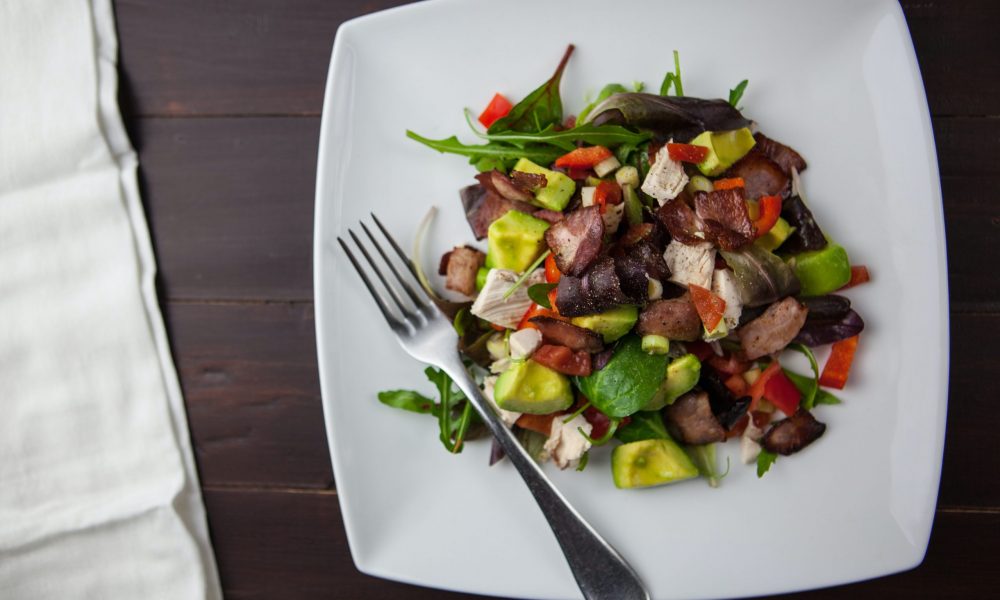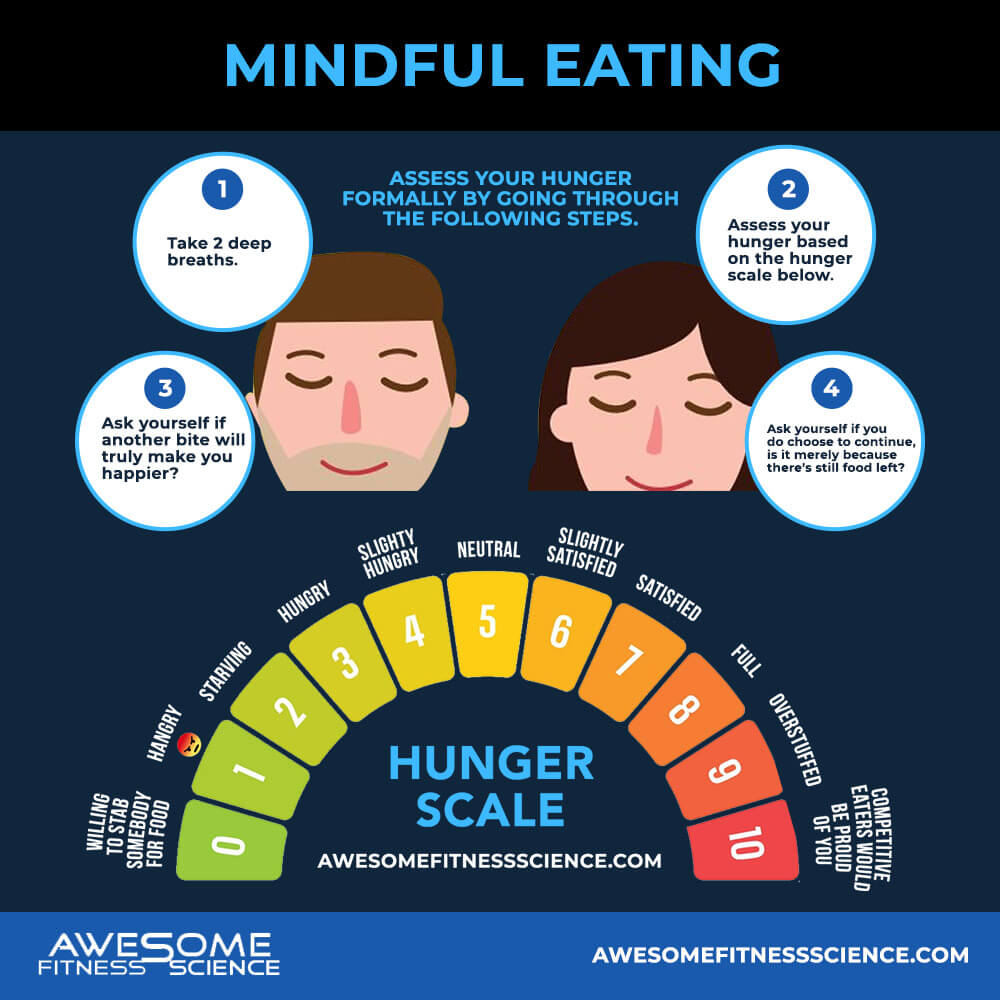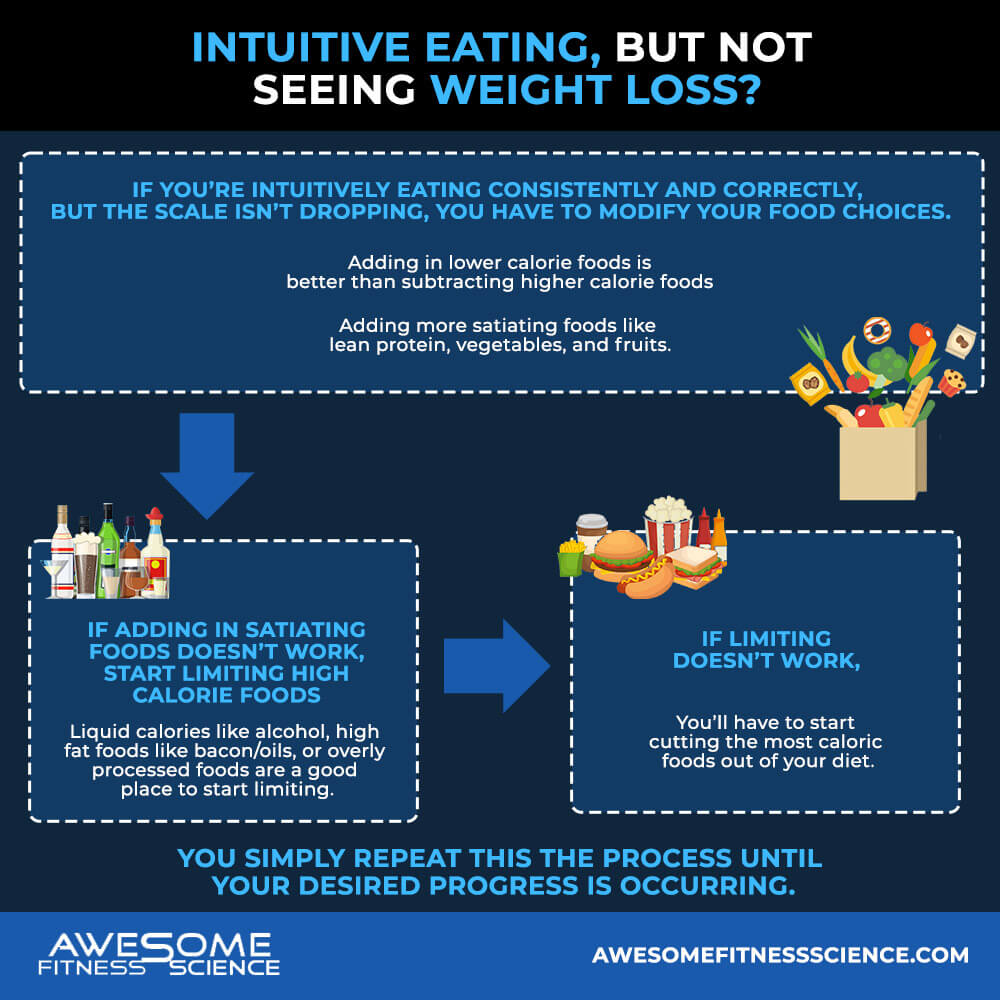
Creatine – The Supplement You Take Till You Die
Have you heard of creatine? Your mom probably thinks it’s a steroid, but who cares what she thinks. Creatine is epic and I don’t say that about many supplements.

Be sure to first read part 1 of this article where you’ll learn the pros/cons of intuitive eating and who it’s for. If intuitive eating is a good fit for you, this article will show you how to master it like a champ.
The primary tool of intuitive eating is the hunger scale which teaches you to be more in tuned with your body’s natural hunger and fullness signals. If used correctly, you should see big improvements in your eating patterns and portions.
Take a gander at the image below.

Each time you get the urge to eat, you will first take 2 deep breaths (don’t skip this step). Then you will rank your hunger.
When you rank hunger, you’re honing in on physical hunger so you can determine if your body truly needs food. These are some general symptoms you’re looking to identify and different people may experience different symptoms when hungry, so it’s vital to identify which ones pertain to you most.
Sensations of physical hunger:
If you don’t experience your usual hunger symptoms, you are not physically hungry. You might be bored, stress, thirsty, or emotional. If you recognize that physical hunger isn’t present, you can accept that food is not needed and mitigate the exact feeling you’re experiencing.
So if you’re stressed, instead of running to food, find a way to deal with the stress directly or a non-food method to destress like going for a walk for example.
Grab my Free Lifter’s Guide to Managing Stress
If you conclude that you are truly physically hungry and hungry enough to warrant a meal (or snack), you will start mindfully eating.
Ideally, you don’t want to be hungrier than a 3 at any point, at least not for too long because your hunger becomes ravenous. Ravenous hunger can quickly cause you to consume unnecessary snacks or over eat in your next meal.
Mindful eating starts with sitting down to eat without any screens. This allows you to truly focus on your food and how it makes you feel.
As you initiate your meal, you will eat slowly while chewing food more frequently and savoring the flavor. A good rule of thumb is to chew at least 4-6 times per bite. This will enhance meal satisfaction and satiety.
Throughout the meal, you should be pausing and drinking water between bites. This should occur at least 4 times during the meal.
Then towards the end of the meal, you will assess your hunger formally by going through the following steps.
If you can truly assess that you’re not quite at a 7 or 8 on the hunger scale, you’re welcome to take another bite. Then you will repeat the above steps again until you terminate the meal.
You can also terminate a meal once you’ve reached a 6 or 7 because as food digests, you will feel fuller later (usually 20 minutes after a meal).
You don’t want to go over an 8 because this can cause the following:
However, If you do intuitive eating correctly, you should experience the following:

Mindful eating or intuitive eating is more than simply learning to assess hunger. It’s a means to change your behavior.
Here are habits that I suggest practicing. These are not mandatory, but honestly, intuitive eating is quite ineffective without them.
Fat loss is not the primary goal of intuitive eating, although it can be a viable tool to intentionally lose weight. Here’s how to lose weight while intuitively eating.
With intuitive eating, you’re not directly aware of your deficit, but you’re allowing your satiety signals to hopefully impose a deficit over time based on the food you’re eating. So if you’re intuitively eating consistently and correctly, but the scale isn’t dropping, you have to modify your food choices.
You can start with a set of recommended foods, but it’s much easier to simply modify your current diet. When modifying a diet, adding in lower calorie foods is better than subtracting higher calorie foods (7).
So take your current diet and add in more satiating foods. Adding more lean protein, vegetables, and fruit is a good start. Continue to build a routine and lifestyle with it and reassess in another week or 2. If weight loss occurs, that’s great. If not, you’ll have to add satiating foods in higher amounts or look to other ways to get fuller sooner or fuller with fewer calories.
If that doesn’t work, then you have to resort to limiting high calorie foods that are overshooting your intake. Liquid calories like alcohol, high fat foods like bacon/oils, or overly processed foods are a good place to start limiting.
If limiting doesn’t work, you’ll have to start cutting the most caloric foods out of your diet.
You simply repeat this the process until your desired weight progress is occuring.

People underestimate the effort required from intuitive eating because on the surface, it’s easy to grasp. Eat when I’m hungry, stop when I’m full. Sounds too simple right?
It is simple, but takes a lot of work to get right.
When you first practice it, you must practice it diligently for optimal results. This means
Intuitive eating is a lot of work and arguably more effortful than tracking macros.
There are simply no shortcuts in nutrition. You have to put in the work to change your behavior and lifestyle. But if done correctly, you will be so happy you mastered this skill for a lifetime.
1. Thomas . “Usual Breakfast Eating Habits Affect Response to Breakfast Skipping in Overweight Women.” Obesity (Silver Spring, Md.), U.S. National Library of Medicine, pubmed.ncbi.nlm.nih.gov/25755093/.
2. MA;, Alhussain. “Irregular Meal-Pattern Effects on Energy Expenditure, Metabolism, and Appetite Regulation: a Randomized Controlled Trial in Healthy Normal-Weight Women.” The American Journal of Clinical Nutrition, U.S. National Library of Medicine, pubmed.ncbi.nlm.nih.gov/27305952/.
3. Masihy, Marcela, et al. “Influence of Eating Schedule on the Postprandial Response: Gender Differences.” MDPI, Multidisciplinary Digital Publishing Institute, 14 Feb. 2019, www.mdpi.com/2072-6643/11/2/401/htm.
4. RE;, Patton. “Circadian Adaptations to Meal Timing: Neuroendocrine Mechanisms.” Frontiers in Neuroscience, U.S. National Library of Medicine, pubmed.ncbi.nlm.nih.gov/24133410/.
5. KA;, Wansink. “The Clean Plate Club: about 92% of Self-Served Food Is Eaten.” International Journal of Obesity (2005), U.S. National Library of Medicine, pubmed.ncbi.nlm.nih.gov/24946909/.
6. Embling, Rochelle, et al. “Effect of Food Variety on Intake of a Meal: a Systematic Review and Meta-Analysis.” OUP Academic, Oxford University Press, 29 Jan. 2021, academic.oup.com/ajcn/article/113/3/716/6123941.
7. Vadiveloo, M, et al. “Increasing Low-Energy-Dense Foods and Decreasing High-Energy-Dense Foods Differently Influence Weight Loss Trial Outcomes.” Nature News, Nature Publishing Group, 7 Dec. 2017, www.nature.com/articles/ijo2017303.
Grab my free guide on How To Enjoy Social Events While Dieting

Have you heard of creatine? Your mom probably thinks it’s a steroid, but who cares what she thinks. Creatine is epic and I don’t say that about many supplements.

Strength training improves your life in so many ways that not doing it is like begging for a suboptimal existence. And no, that’s not an exaggeration. Look at the research below my friend.

Amino acid supplements have overwhelming evidence against their use. I dream of the day dorks across this world would stop purchasing worthless powders like BCAAs.